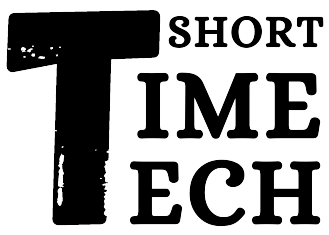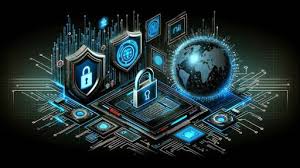The concept of Web3, the next evolution of the internet, has gained significant traction in 2024. As the internet continues to evolve, decentralization has emerged as a fundamental principle driving this transformation. Web3 represents a shift from traditional, centralized web structures to a more distributed and user-centric model. This article explores how decentralization is shaping the internet in 2024, focusing on the key aspects of Web3, its current applications, and its potential impact on the future of the internet.
Understanding Web3: The Foundation of Decentralization
1. The Shift from Centralization to Decentralization
Web3 is built on the principles of decentralization, aiming to address the shortcomings of Web2, the current iteration of the internet. Web2 is characterized by centralized platforms and services controlled by a few major entities, such as social media giants and tech corporations. These platforms often collect and monetize user data, raising concerns about privacy and control.
In contrast, Web3 envisions a decentralized web where users have greater control over their data and digital interactions. This shift is made possible through blockchain technology, which enables the creation of decentralized applications (dApps) and smart contracts. Blockchain’s distributed ledger system ensures that no single entity has complete control, promoting transparency and security.
2. Key Technologies Driving Web3
Several technologies are integral to the development and functionality of Web3:
- Blockchain: At the core of Web3 is blockchain technology, which provides a decentralized ledger for recording transactions and data. Blockchains, such as Ethereum and Polkadot, support smart contracts and dApps, allowing for automated and transparent interactions without intermediaries.
- Decentralized Identifiers (DIDs): DIDs enable users to manage their digital identities without relying on centralized authorities. They provide a secure and private way to authenticate and interact online, empowering users with greater control over their personal information.
- Interplanetary File System (IPFS): IPFS is a decentralized storage network that allows for the distribution and retrieval of data across a peer-to-peer network. It addresses the limitations of traditional centralized storage by ensuring that data is available even if some nodes go offline.
Current Applications and Use Cases of Web3
1. Decentralized Finance (DeFi): Revolutionizing Financial Services
One of the most notable applications of Web3 is Decentralized Finance (DeFi), which aims to transform the financial industry by removing intermediaries and enabling peer-to-peer transactions. DeFi platforms leverage blockchain technology to offer financial services such as lending, borrowing, and trading in a decentralized manner.
In 2024, DeFi has gained significant traction, with numerous platforms providing innovative financial products. For example, decentralized exchanges (DEXs) allow users to trade cryptocurrencies directly without relying on traditional exchanges. Additionally, lending and borrowing platforms enable users to earn interest or obtain loans using their crypto assets, all facilitated through smart contracts.
2. Non-Fungible Tokens (NFTs): Redefining Digital Ownership
NFTs have become a prominent use case for Web3, enabling the creation, buying, and selling of unique digital assets on the blockchain. NFTs represent ownership of digital items, such as artwork, music, and virtual real estate, and provide a way for creators to monetize their work.
In 2024, NFTs continue to expand beyond digital art, with applications in gaming, virtual worlds, and intellectual property. Virtual real estate platforms, such as Decentraland and The Sandbox, allow users to purchase and develop land within virtual environments. Additionally, NFTs are being used to represent ownership of digital goods and experiences, creating new revenue streams for creators and businesses.
3. Decentralized Social Networks: Empowering Users
Decentralized social networks are another significant development in the Web3 ecosystem. Unlike traditional social media platforms, which are controlled by centralized entities, decentralized social networks aim to give users control over their data and interactions.
Platforms like Mastodon and Minds offer decentralized alternatives to mainstream social media, allowing users to create and join communities without being subject to the content moderation policies of large corporations. These platforms leverage blockchain technology to ensure that user data is not exploited for profit and that content moderation is handled in a more transparent and community-driven manner.
The Future of Web3: Challenges and Opportunities
1. Scalability and Usability
While Web3 holds great promise, several challenges remain. Scalability is a significant issue, as current blockchain networks struggle to handle high transaction volumes efficiently. Solutions such as Layer 2 scaling and sharding are being developed to address these limitations and improve the performance of decentralized applications.
Usability is another challenge, as Web3 technologies often require users to have a certain level of technical knowledge. Efforts are underway to make Web3 more user-friendly, including the development of intuitive interfaces and seamless integration with existing web technologies.
2. Regulatory and Ethical Considerations
As Web3 continues to evolve, regulatory and ethical considerations will play a crucial role in shaping its future. Governments and regulatory bodies are grappling with how to address issues related to privacy, security, and financial transactions within a decentralized framework. Striking a balance between innovation and regulation will be essential to fostering the growth of Web3 while protecting users and ensuring compliance with legal standards.
Conclusion
The evolution of Web3 in 2024 represents a transformative shift towards a more decentralized and user-centric internet. By leveraging blockchain technology and decentralized protocols, Web3 is reshaping various aspects of the digital landscape, from finance and digital ownership to social interactions. While challenges remain, the continued development and adoption of Web3 technologies hold the potential to create a more transparent, secure, and equitable online environment. As the internet evolves, Web3 is set to play a pivotal role in defining the future of digital interactions and experiences.

